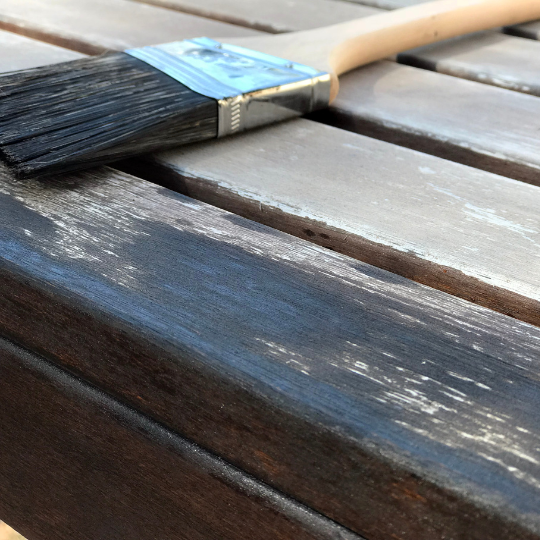When it comes to enhancing the beauty and longevity of wooden surfaces, proper staining is paramount. Whether you’re refinishing furniture, decking, or cabinetry, the importance of thorough preparation cannot be overstated. In this guide, we delve into the significance of adequate preparation before wood staining and outline the essential steps to achieve professional-looking results. From sealing pores to smoothing surfaces, each step in the preparation process plays a crucial role in ensuring the stain adheres evenly and penetrates deeply. By taking the time to prepare your wood properly, you not only enhance its aesthetic appeal but also prolong its lifespan by protecting it against moisture, UV rays, and wear. Join us as we explore the importance of proper preparation for wood staining and uncover the fundamental steps you need to follow to achieve stunning, long-lasting results that will leave your wood surfaces looking their best for years to come.
Understanding the Importance of Proper Wood Preparation Before Staining
Wood staining is a transformative process that enhances the natural beauty of wood while also providing protection against the elements. However, achieving a flawless finish doesn’t solely depend on the quality of the stain or the skill of the applicator. Proper preparation of the wood surface is equally, if not more, important. In this guide, we’ll explore why proper wood preparation is crucial before staining and delve into the essential steps to ensure a successful outcome.

Enhancing Absorption
Properly preparing wood before staining helps improve the absorption of the stain into the wood fibers. Untreated or poorly prepared wood surfaces may contain residues, oils, or contaminants that hinder the state’s ability to penetrate evenly. By cleaning and sanding the wood, you create a clean, porous surface that allows the stain to adhere uniformly, resulting in a more consistent finish.
Ensuring Longevity
A well-prepared wood surface promotes better adhesion of the stain, which contributes to its longevity. When stain is applied to a surface with inadequate preparation, it may peel, chip, or wear off prematurely, leaving the wood vulnerable to damage from moisture, UV rays, and other environmental factors. Properly preparing the wood helps create a strong bond between the stain and the wood, ensuring a durable finish that withstands the test of time.
Achieving Desired Color and Tone
Wood staining is not just about adding color; it’s also about enhancing the natural beauty of the wood grain. Proper preparation ensures that the wood surface is free of imperfections, such as scratches, dents, or discolorations, that may affect the final appearance of the stain. By addressing these imperfections before staining, you can achieve a more uniform color and tone, allowing the wood’s natural characteristics to shine through.
Preventing Blotching and Unevenness
One of the most common issues encountered when staining wood is blotching or uneven coloration. This can occur when the wood absorbs the stain unevenly due to variations in porosity or moisture content. Proper preparation helps minimize these issues by smoothing out the wood surface and sealing any pores or imperfections that could cause uneven absorption. As a result, you’re more likely to achieve a consistent, professional-looking finish.
Minimizing Future Maintenance
Investing time in properly preparing wood before staining can save you from future headaches and maintenance tasks. A well-prepared surface is less prone to issues such as peeling, flaking, or fading, reducing the need for frequent reapplication of the stain. By taking the time to prepare the wood properly upfront, you can enjoy a beautiful, long-lasting finish with minimal upkeep required.
Step-by-Step Guide: Preparing Wood for Staining Like a Pro
Properly preparing wood for staining is essential for achieving professional-looking results. Whether you’re a seasoned woodworker or a DIY enthusiast, following the right steps can make all the difference in the final outcome of your project. In this comprehensive guide, we’ll walk you through the step-by-step process of preparing wood for staining like a pro, covering everything from surface cleaning to final conditioning. By following these guidelines, you’ll ensure that your wood surfaces are ready to receive stain evenly and achieve a flawless finish.
Assess the Wood Surface
Before diving into the preparation process, take a close look at the wood surface to assess its condition. Look for any imperfections such as scratches, dents, or stains that may need to be addressed before staining. Additionally, check for any existing finishes or coatings that may need to be removed prior to staining.
Clean the Surface Thoroughly
Start by cleaning the wood surface to remove dirt, dust, grease, and other contaminants that could interfere with the staining process. Use a mild detergent or wood cleaner and a clean cloth or sponge to scrub the surface gently. Rinse with clean water and allow the wood to dry completely before proceeding to the next step.
Sand the Wood Surface
Once the wood is clean and dry, it’s time to sand the surface to smooth out any rough spots and open up the wood pores for better stain absorption. Use a medium-grit sandpaper (around 120-150 grit) to sand the wood in the direction of the grain, taking care to remove any existing finish or coatings completely. Follow up with a finer grit sandpaper (around 220-240 grit) to achieve a smooth, uniform surface.
Remove Sanding Residue
After sanding, it’s important to remove any sanding residue from the wood surface to ensure a clean, smooth finish. Use a tack cloth or a vacuum with a soft brush attachment to remove dust and debris from the surface. Avoid using compressed air, as it can force dust particles deeper into the wood pores.
Consider Using a Wood Conditioner
Depending on the type of wood you’re staining and the desired outcome, you may choose to use a wood conditioner before applying the stain. Wood conditioners help to seal the wood pores and promote more even stain absorption, especially on porous or blotchy woods such as pine or maple. Follow the manufacturer’s instructions for application and drying times.
Environmental Factors to Consider When Preparing Wood for Staining
When preparing wood for staining, it’s essential to consider environmental factors that can affect the outcome of your project. From temperature and humidity to ventilation, these variables play a significant role in the staining process. In this guide, we’ll highlight the key environmental factors you need to consider to ensure a successful wood staining experience.
- Temperature: Staining is best done in moderate temperatures, typically between 50°F to 90°F. Extreme heat or cold can affect the drying time and application of the stain.
- Humidity: High humidity can prolong drying times and increase the risk of blotching or uneven staining. Aim for moderate humidity levels (around 40-60%) for optimal results.
- Ventilation: Proper ventilation is crucial when working with staining products to ensure adequate air circulation and to minimize exposure to fumes. Work in a well-ventilated area or use fans and respirators as needed.
- Drying Time: Allow sufficient drying time between coats and before applying topcoats or sealants. Factors such as temperature and humidity can affect drying times, so be patient and follow the manufacturer’s recommendations.
Conclusion
“Proper Preparation for Wood Staining: Importance and Steps” underscores the significance of meticulous preparation in wood staining endeavors. Through thorough surface cleaning, sanding, and priming, Painting Done By Angels ensures optimal absorption and longevity of the stain, ultimately enhancing the aesthetic appeal and durability of the wood. By adhering to these essential steps, customers can expect impeccable results and prolonged satisfaction with their stained wood surfaces. Painting Done By Angels’ commitment to excellence in preparation not only elevates the quality of their work but also fosters trust and loyalty among their clientele.


